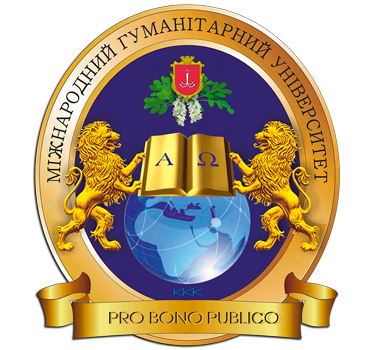COMPARATIVE CHARACTERISTICS OF CHANGES IN THE HEMOSTATIC SYSTEM IN PATIENTS WITH A DIFFERENT CHANCE OF DEVELOPING FAT EMBOLISM SYNDROME USING THE METHOD OF LOW-FREQUENCY PIEZOELECTRIC THROMBOELASTOGRAPHY
DOI:
https://doi.org/10.31379/2411.2616.16.2.10Keywords:
LPTEG, polytrauma, fat embolism syndrome, coagulopathy.Abstract
Introduction. Politrauma takes one of the leading positions among the causes of death of the adult working population. Complex combined injuries of the musculoskeletal system may be accompanied by an embolism of lipid globules, which, in turn, play a role in the activation of the vascular-platelet link of hemostasis. In the presence of a sufficient size of lipid globules, the development of the fat embolism syndrome (FES) is possible in the future, however, clinical manifestation of the aforementioned condition does not always occur. Aim. The aim of the study is to compare changes in the hemostatic system in patients with different chances of developing FES using the method of low-frequency piezoelectric thromboelastography (LPTEG). Materials and methods. The state of the system of regulation of the state of aggregation of blood was evaluated in a group of 72 patients with a diagnosis of polytrauma on the third day of their stay in the general intensive care unit of the Odessa Regional Clinical Hospital. Changes were assessed using LPTEG: in group A (n = 38) without clinical signs of FES and with a prognostic evaluation of the development of FES according to Borisov ≤5 points at the time of admission; in group B (n = 34), without clinical signs of FES and with a prognostic assessment of the development of FES according to Borisov ≤10 points at the time of admission; the control group (n = 20) was composed of healthy donors who underwent LPTEG. Results. LPTEG in patients of groups A and B shows no significant difference (p <0.05). The presence of activation of the vascular-platelet link of hemostasis, significant structural and chronometric hypercoagulation with increased thrombin generation and activation of blood fibrinolytic activity are noted in both groups. The research results demonstrate a group of patients with polytrauma as a cohort in which there are profound disorders of the regulation system of the state of aggregation of blood. Conclusions. The method of low-frequency piezoelectric thromboelastography demonstrates the absence of statistically significant changes in the hemostasis system for patients with polytrauma and different prognostic assessment of the development of ES according to Borisov at the time of admission. These studies should be taken into account when: developing protocols for managing patients with coagulation disorders in polytrauma; stratification of risk of PVC development and choice of optimal therapy in patients with polytrauma; optimization of pharmacological and non-pharmacological correction of the RASK system.
References
Баранов А.В. Медико-тактическая характеристика травм таза у пострадавших в дорожно-транспортных и других нештатных происшествиях в условиях областного центра европейского севера России (на примере г. Архангельска) / Баранов А.В. // :
автореф. дисс. канд. мед. наук. Архангельск, 2013. 24 с.)
Повреждения таза, как аспект дорожно-транспортного травматизма / Баранов А.В. и соавт.// Врач-аспирант. – 2012. – Т. 52, – № 3. – С. 389-392)
Кузьмин А.Г. Дорожно-транспортный травматизм как национальная проблема / Кузьмин А.Г.// Экология человека. – 2011. – № 3. – С. 44-49)
Политравма. Неотложная помощь и транспортировка. / Агаджанян В.В. и соавт. // Новосибирск: Наука. – 2008. – 320 с.
Champion, H.R. A Revision of the Trauma Score / H.R.Champion // J. Trauma. — 1989. — № 29. — С. 623-629.)
Boyd, C.R. Evaluating Trauma Care. The TRISS Method / C.R. Boyd // J. Trauma. — 1987. — № 27. — С. 370-378.
Georgopoulos, D., Bouros, D. Fat embolism syndrome: clinical examination is still the preferable diagnostic method / D. Georgopoulos, D. Bouros // Chest. — 2003. — № 123. — С. 982-983.
Gossling, H.R., Pellegrini, A.D. Fat embolism syndrome. A review of the pathophysiology and physiological basis of treatment / H.R. Gossling, A.D. Pellegrini // Clin. Orthop. — 1982. — № 165. — С. 68-82.
Пащук, А.Ю., Фадєєв, П.А. Диагностика и лечение жировой эмболии. / Пащук, А.Ю., Фадєєв, П.А. // Ортопедия, травматология и протезирование. – 1991. – №12. – С. 41-44.
Борисов М.Б., Гаврилин С.В. Синдром жировой эмболии при наличии сочетанных травмах. / Борисов М.Б., Гаврилин С.В.// Вестн. хирургии им. И.И.Грекова. – 2006. – № 165 (5). – С. 68—71.
Can we use the low-frequency piezoelectric tromboelastography for diagnosis coagulation disorders? / Tarabrin O.A.et al. // European Journal of Anaesthesiology. – 2013. – Vol.30. – P. 92.
Современные аспекты анестезиологического обеспечения и профилактика тромбо-геморрагических осложнений у больных при эндопротезировании тазобедренного сустава/О.А.Тарабрин, И.Л. Басенко / Одесский государственный медицинский университет /Одесса – 2009 – 36с.
Тромбоэмболия легочной артерии. Современная концепция, базовые принципы терапии / А.В.Сімовських, Е.П.Кирпичникова, О.А.Тарабрін / Одесский государственный медицинский університет – Одесса 2003 – 13с.
Low-frequency piezoelectric thromboelastography method in studying of haemostatic system / Tarabrin O./ ESA Academy / Jun 2, 2018 – 1с.
Технологія низькочастотної п’єзотромбоеластографії у моніторингу протитромботичної терапії/О. О. Тарабрін, І. І. Тютрін, П. О. Тарабрін, Д. С. Володичев, Р. Є. Сухонос, О. С. Суслов, І. В. Твердовський, І. М. Кузьмич, І. Л. Басенко/Клиническая анестезиология и интенсивная терапия № 2(12); 2018; стр. 23-35.
Низькочастотна п’езотромбоєластографія цільної крові (алгоритми діагностики та корекції гемо статичних розладів): практичний порадник / О. Тарабрін, І.І. Тютрін, В.В. Удут, П.О. Тарабрін/ ПФ «Університетська книга», 2018. 200с.






